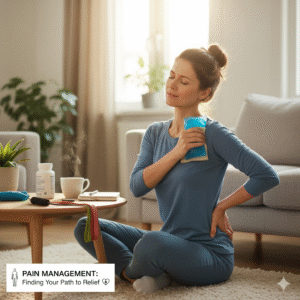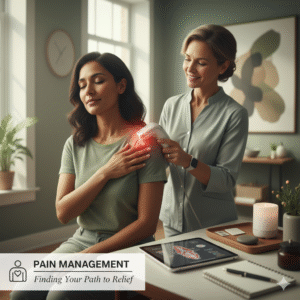
Pain is a universal experience that affects people in different ways, whether it’s acute pain from an injury or chronic pain from ongoing health conditions. Effective pain management is essential to maintain quality of life, stay active, and prevent long-term complications. This guide explains the key aspects of pain management and practical ways to cope.
What is Pain Management?
Pain management refers to the process of reducing or controlling pain to improve comfort and function. It involves a combination of medical treatments, lifestyle adjustments, and therapeutic techniques tailored to an individual’s needs. The goal isn’t always to completely eliminate pain but to improve daily functioning and quality of life.
Types of Pain
Understanding the type of pain you’re experiencing helps determine the right management approach:
Acute Pain
Short-term pain that occurs suddenly, often due to injury, surgery, or illness.
Usually resolves once the underlying cause heals.
Chronic Pain
Persistent pain lasting more than 3–6 months.
Common causes include arthritis, back problems, migraines, and nerve damage.
Neuropathic Pain
Caused by nerve damage or dysfunction.
Described as burning, tingling, or shooting pain.
Musculoskeletal Pain
Pain in muscles, bones, or joints.
Often results from overuse, strain, or injury.
Common Pain Management Strategies
1. Medications
Over-the-counter pain relievers (e.g., acetaminophen, ibuprofen)
Prescription medications for severe or chronic pain
Topical creams or patches for localized relief
2. Physical Therapy and Exercise
Targeted exercises to strengthen muscles, improve flexibility, and reduce strain
Posture correction and ergonomic adjustments
Low-impact activities like swimming or walking
3. Heat and Cold Therapy
Cold packs reduce inflammation and numb acute pain
Heat therapy relaxes muscles and improves blood flow
4. Mind-Body Techniques
Meditation, deep breathing, and mindfulness help reduce pain perception
Yoga and tai chi improve flexibility and reduce stress-related pain
5. Alternative Therapies
Acupuncture, massage, and chiropractic care may help some individuals
Always consult a healthcare professional before trying new treatments
Tips for Effective Pain Management
Identify triggers: Keep a pain diary to track activities, foods, or habits that worsen pain.
Stay active: Gentle movement prevents stiffness and maintains joint function.
Maintain a healthy lifestyle: Balanced nutrition, adequate sleep, and stress management support pain control.
Seek professional help: Persistent pain requires evaluation from a physician, physiotherapist, or pain specialist.
Conclusion
Pain can impact every aspect of your life, but effective pain management strategies can help you regain control and improve daily functioning. Combining medical treatments, physical therapy, lifestyle changes, and mind-body techniques offers a comprehensive approach to living comfortably and maintaining an active, fulfilling life.

